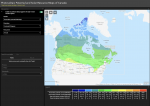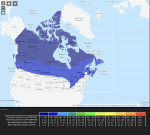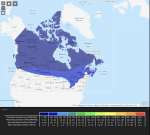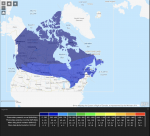Trail Talk
Well-known member
Considering upgrading our solar input. While testing the hydronics heating this week, OEV took some data points for battery SOC over 48 hours at cabin temp of 20C/68F. Start was 7am on day 1. The overnight power drop was not recovered during the daytime hours under clear skies.

An interesting 2019 CBC story on the southern Yukon solar utility illustrated a huge drop in solar collection from Nov to Jan.

We have room for another two panels to double our solar collection...in theory. Would appreciate hearing the experience of fellow northerners using solar during the winter - should we expect to see worthwhile gains from expanding our capacity?

An interesting 2019 CBC story on the southern Yukon solar utility illustrated a huge drop in solar collection from Nov to Jan.

We have room for another two panels to double our solar collection...in theory. Would appreciate hearing the experience of fellow northerners using solar during the winter - should we expect to see worthwhile gains from expanding our capacity?





